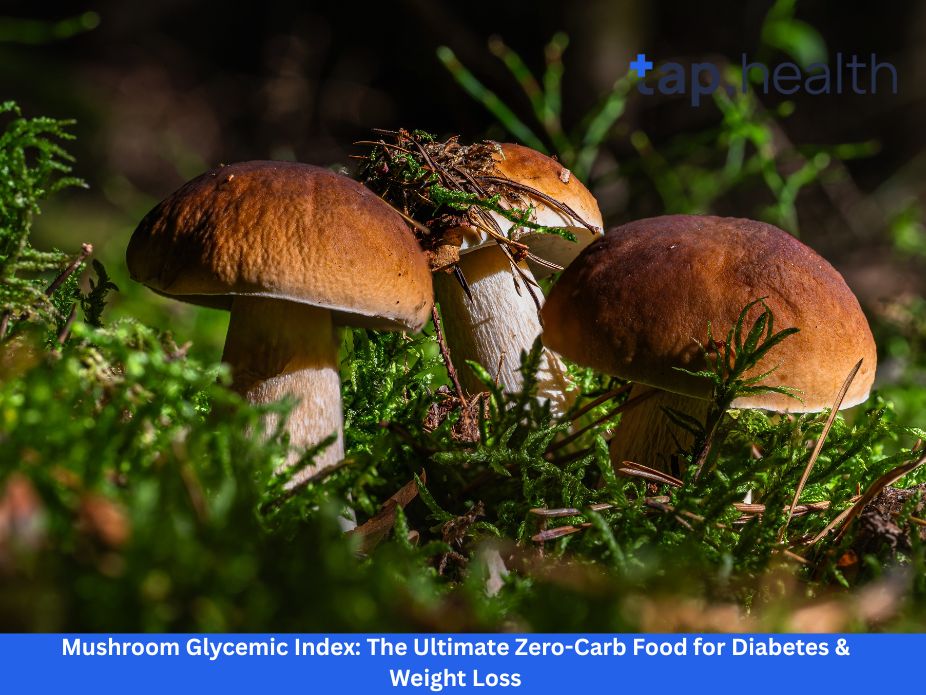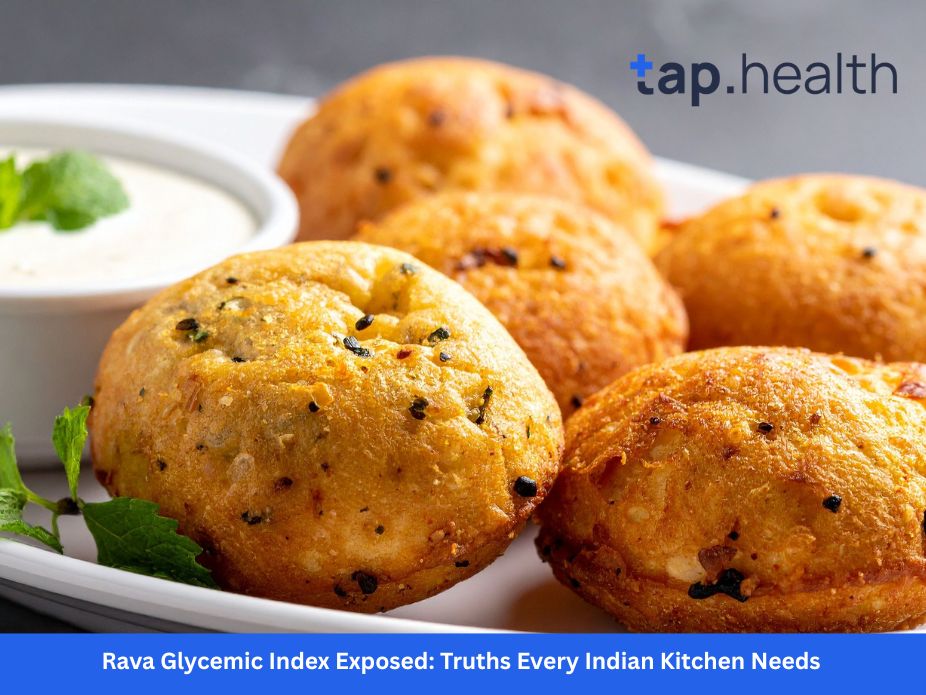Let’s play a quick game. Think about your favorite foods. What comes to mind? Pasta? Rice? Bread? Chocolate?
Now, think about how you feel after eating them. That quick burst of energy, followed by a slump that makes you want to nap? That’s your blood sugar on a rollercoaster.
Now, imagine a food that you could eat without worrying about that rollercoaster. A food that fills you up, tastes delicious, and has virtually no impact on your blood sugar.
Sounds too good to be true? Welcome to the wonderful world of mushrooms.
Whether you love them in a creamy curry, sizzling in a stir-fry, or grilled to perfection, mushrooms are a kitchen superstar. But their real superpower is something most people don’t talk about: their Glycemic Index (GI).
If you’re managing diabetes, watching your weight, or just trying to eat healthier, understanding the glycemic index of mushrooms is a game-changer. In this article, we’ll uncover the simple, surprising truth. Get ready to see this humble fungus in a whole new light.
What is the Glycemic Index? The “Speed Limit” for Your Food
Before we dive into mushrooms, let’s get one thing clear. What exactly is the Glycemic Index?
Think of the carbohydrates in your food as cars on a highway leading to your bloodstream. The Glycemic Index is like the speed limit for those cars.
It’s a scale from 0 to 100 that measures how fast and how high a carbohydrate-rich food can make your blood sugar (glucose) levels rise.
Here’s the simple breakdown:
- Low GI (55 or less): The Slow Lanes. These foods break down slowly, releasing sugar into your blood at a gentle, steady pace. This keeps you feeling full and energized for hours. Examples: apples, lentils, beans.
- Medium GI (56 to 69): The Moderate Lanes.
- High GI (70 and above): The Fast Lanes. These foods are like race cars. They break down extremely quickly, causing a rapid spike in your blood sugar. This spike is often followed by a sharp crash, leaving you tired and hungry. Examples: white bread, sugary drinks, potatoes.
For stable energy and better health, we want to spend most of our time in the “slow lanes.”
The Big Reveal: What is the Glycemic Index of Mushrooms?
Now, for the moment you’ve been waiting for. Let’s get to the number.
Mushrooms have a glycemic index of zero.
That’s right. Zero.
Let that sink in for a moment. When you look at the GI scale from 0 to 100, mushrooms are all the way at the very beginning. They have no measurable impact on your blood sugar levels.
Why is the GI of Mushrooms Zero?
The reason is beautifully simple. The Glycemic Index only measures the impact of carbohydrates on blood sugar.
Mushrooms are unique. They are composed mostly of water, fiber, and protein. They contain very, very few digestible carbohydrates.
Because there are virtually no carbs to break down into sugar, eating mushrooms does not raise your blood glucose. It’s like they don’t even register on the blood sugar radar.
Mushrooms vs. Other Foods: A GI Showdown
To truly appreciate how unique mushrooms are, let’s compare them to other common foods.
- Mushrooms (GI = 0) vs. White Potato (GI ~78): A potato will send your blood sugar soaring, while mushrooms will leave it perfectly steady.
- Mushrooms (GI = 0) vs. Brown Rice (GI ~68): Even healthy whole grains like brown rice have carbs that raise blood sugar. Mushrooms do not.
- Mushrooms (GI = 0) vs. An Apple (GI ~36): An apple is a low-GI fruit, but it still has some natural sugars. Mushrooms have none.
- Mushrooms (GI = 0) vs. Carrots (GI ~35): Even non-starchy vegetables like carrots have a few carbs. Mushrooms are in a league of their own.
This makes mushrooms one of the safest, most blood-sugar-friendly foods on the planet.
Is Mushroom Good for Diabetes?
This is the most important question for many readers, and the answer is an overwhelming yes.
Mushrooms are a superstar food for people with diabetes and prediabetes.
Here’s why:
- Zero Blood Sugar Impact: You can eat a plateful of mushrooms without worrying about a post-meal blood sugar spike. This is incredibly freeing for people who have to constantly monitor their glucose levels.
- Promotes Satiety and Weight Management: The fiber and protein in mushrooms are very filling. Replacing high-carb foods with mushrooms can help you feel satisfied while consuming fewer calories and carbs, which is crucial for diabetes management.
- A Perfect Substitute: Mushrooms have a hearty, “meaty” texture, making them an excellent substitute for high-carb ingredients. Think mushroom “rice,” portobello mushroom “buns,” or diced mushrooms in place of half the meat in a recipe.
Beyond Blood Sugar: The Amazing Health Benefits of Mushrooms
While the zero glycemic index of mushrooms is their headline feature, this incredible food offers a treasure chest of other health benefits.
A Nutritional Powerhouse (Without the Calories)
Mushrooms are incredibly nutrient-dense. This means they pack a big nutritional punch for a very small number of calories.
- Vitamin D: Some mushrooms (especially those treated with UV light) are one of the only non-animal sources of Vitamin D, which is crucial for bone health and immune function.
- B Vitamins: They are a great source of B vitamins like riboflavin (B2), niacin (B3), and pantothenic acid (B5), which help your body convert food into energy.
- Selenium: A powerful antioxidant that protects your cells from damage.
- Potassium: This mineral helps maintain healthy blood pressure.
Your Ally in Weight Loss
Trying to lose weight? Mushrooms are your best friend.
- Extremely Low in Calories: You can eat a large, satisfying portion for very few calories.
- High in Satiety: The fiber and water content fill up your stomach, telling your brain that you’re full. This helps prevent overeating.
Boosts Immune Health
Mushrooms contain special types of fiber called beta-glucans. These compounds are known to help activate and support your immune system, helping your body fight off illness.
Supports a Healthy Heart
The fiber, potassium, and antioxidants in mushrooms all contribute to heart health by helping to lower cholesterol and reduce inflammation in the body.
How to Enjoy Mushrooms for Maximum Health Benefits
The best part about mushrooms is their versatility. They are like a flavor sponge, absorbing the tastes of the herbs and spices you cook them with. Here’s how to make them a star in your diet.
Smart & Healthy Cooking Methods
How you cook mushrooms can make a big difference in keeping your meals healthy.
- Sautéing: Use a small amount of heart-healthy oil like olive or avocado oil. Don’t be afraid to let them brown—it brings out a deep, savory flavor.
- Grilling or Roasting: Perfect for large portobello caps. Brush with a little oil and your favorite spices and grill or roast until tender. They make a fantastic, hearty burger patty alternative.
- Steaming or Boiling: Great for adding to soups, stews, and curries.
Delicious & Diabetes-Friendly Recipe Ideas
1. The Ultimate Mushroom Stir-fry:
Sauté a mix of mushrooms (shiitake, button, oyster) with garlic, ginger, and a rainbow of bell peppers and broccoli. Use a low-sodium soy sauce or tamari. Serve with a small portion of brown rice or quinoa.
2. Portobello Mushroom “Pizzas”:
Remove the stems from large portobello caps. Top with a spoonful of low-sugar tomato sauce, a sprinkle of herbs, and a little mozzarella cheese. Bake until bubbly for a delicious, low-carb “pizza” experience.
3. Creamy Mushroom Soup (Without the Cream!):
Sauté onions and mushrooms. Blend with vegetable broth until smooth. The natural creaminess of the blended mushrooms creates a rich, satisfying texture without needing any actual cream.
4. Mushroom “Rice”:
Pulse fresh mushrooms in a food processor until they reach a rice-like consistency. Sauté quickly in a pan for 2-3 minutes. Use this as a zero-carb base for curries, stir-fries, or as a side dish.
What to Avoid
- Drowning in Oil or Butter: While a little fat is fine for cooking, loading mushrooms up with excessive butter or oil adds unnecessary calories.
- Creamy, High-Fat Sauces: Be mindful of recipes that call for cups of heavy cream or cheese, as these can turn a healthy mushroom dish into a high-calorie one.
The Final Verdict: A True Superfood
So, what’s the bottom line on the glycemic index of mushrooms?
Mushrooms are a true nutritional superstar with a glycemic index of zero. They are one of the best possible food choices for diabetics, weight watchers, and anyone seeking better health.
They provide a feeling of fullness, essential nutrients, and incredible versatility, all without impacting your blood sugar. They are the ultimate “free” food on a healthy eating plan.
So, the next time you’re at the market, grab a few extra packets of these fantastic fungi. Your body—and your taste buds—will thank you.
Frequently Asked Questions (FAQs)
Q1: Can diabetics eat mushrooms every day?
A: Yes! Diabetics can and should enjoy mushrooms regularly. Their zero glycemic index makes them an incredibly safe and beneficial food. They can be eaten daily as part of a balanced diet without worrying about blood sugar spikes.
Q2: Do all types of mushrooms have a GI of zero?
A: Yes, all common edible mushrooms—like button, cremini, portobello, shiitake, and oyster mushrooms—have a negligible amount of carbohydrates and therefore a glycemic index of zero.
Q3: Is mushroom good for weight loss?
A: Absolutely. Mushrooms are a top-tier food for weight loss. They are very low in calories and high in fiber and water, which helps you feel full and satisfied. Replacing even a portion of the meat in a recipe with mushrooms can significantly reduce the meal’s calorie count.
Q4: What is the glycemic index of mushroom soup?
A: This depends entirely on the recipe. A simple, homemade mushroom soup made from blended mushrooms and broth will have a very low GI. However, a canned or restaurant cream of mushroom soup often contains added flour, cornstarch, or sugar as thickeners, which will raise the GI. Always check ingredients or make your own.
Q5: Are fried mushrooms still low GI?
A: Yes, the GI remains zero because frying doesn’t add carbs to the mushroom itself. However, the breading or batter on fried mushrooms (like pakoras) is full of high-GI flour. Even without breading, deep-frying adds a lot of extra calories and fat, making it a less healthy choice overall.
Q6: Can I eat mushrooms at night?
A: Yes, mushrooms are an excellent evening meal. They are light, easy to digest for most people, and their zero-GI property means they won’t cause blood sugar fluctuations that can disrupt sleep. A light mushroom stir-fry or soup is a perfect dinner option.
Q7: How do mushrooms compare to other vegetables for diabetes?
A: Mushrooms are in a class of their own due to their zero GI. While non-starchy vegetables like leafy greens, cucumbers, and broccoli are also fantastic low-GI choices, mushrooms are unique for having virtually no carbs at all. They are the ultimate diabetes-friendly vegetable.


